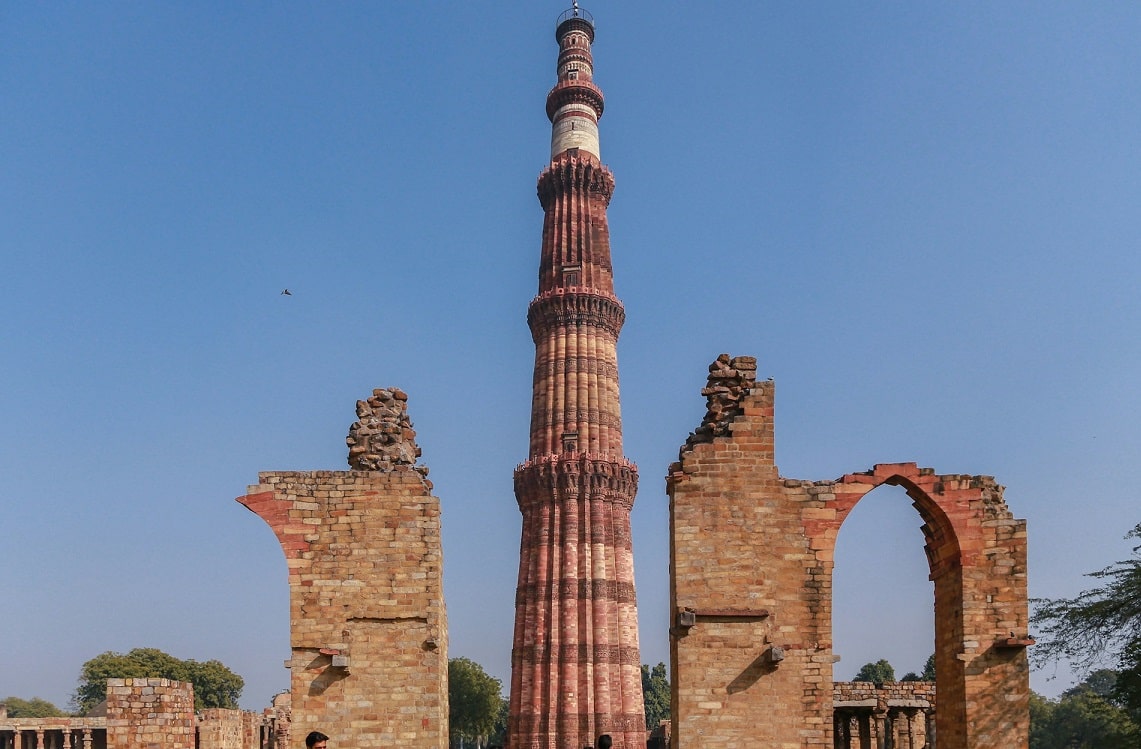Delhi, the capital city of India, boasts a treasure trove of historical landmarks that reflect its rich and diverse heritage. From the majestic Red Fort, a symbol of Mughal grandeur, to the towering Qutub Minar, an epitome of Indo-Islamic architecture, Delhi’s historical sites offer a journey through centuries of civilization. The serene gardens and intricate marble carvings of Humayun’s Tomb, the grandeur of Jama Masjid’s Mughal architecture, and the poignant war memorial of India Gate stand as testaments to the city’s storied past.
Explore the beautiful Places to Visit in Delhi.
Beyond these iconic landmarks, Delhi also harbors lesser-known gems like Safdarjung’s Tomb and the medieval ruins of Hauz Khas Complex. Whether it’s exploring ancient astronomical instruments at Jantar Mantar or paying homage at Raj Ghat, Delhi’s historical places provide a captivating glimpse into the city’s rich history, making it a compelling destination for history enthusiasts and travelers alike.
List of Historical Places in Delhi
Here are some prominent historical places to visit in Delhi:
- Red Fort (Lal Qila): A UNESCO World Heritage Site, the Red Fort is an iconic symbol of Delhi. Built by Mughal Emperor Shah Jahan, it served as the main residence of the Mughal emperors for nearly 200 years. The fort’s imposing red sandstone walls, intricate marble carvings, and beautiful gardens make it a must-visit attraction.
- Qutub Minar: Another UNESCO World Heritage Site, the Qutub Minar is the tallest brick minaret in the world. Built in the 12th century by Qutb-ud-din Aibak, the first ruler of the Delhi Sultanate, it stands as a remarkable example of Indo-Islamic architecture. The complex also includes other historical structures such as the Iron Pillar of Delhi and the Quwwat-ul-Islam Mosque.
- Humayun’s Tomb: This magnificent mausoleum is the final resting place of Mughal Emperor Humayun and is considered a precursor to the Taj Mahal. Built in the 16th century, it features a splendid combination of Persian and Mughal architectural styles, including intricate marble lattice work and serene gardens.
- Jama Masjid: One of the largest mosques in India, Jama Masjid was commissioned by Emperor Shah Jahan and completed in 1656. It showcases exquisite Mughal architecture with red sandstone and white marble, and its vast courtyard can accommodate thousands of worshippers.
- India Gate: A prominent landmark in Delhi, India Gate is a war memorial dedicated to Indian soldiers who died during World War I. Designed by Sir Edwin Lutyens, it stands as a tribute to the sacrifices of the Indian Army. The surrounding lawns make it a popular spot for picnics and evening strolls.
- Lotus Temple: Known for its distinctive lotus-shaped architecture, the Lotus Temple is a Bahá’í House of Worship and a symbol of peace and unity. Visitors of all faiths are welcome to meditate and pray in its serene surroundings.
- Old Fort (Purana Qila): Believed to be one of the oldest forts in Delhi, the Old Fort dates back to the 16th century. It houses several historical structures, including the Qila-i-Kuhna Mosque and the Sher Mandal, where Emperor Humayun suffered a fatal accident.
- Tughlaqabad Fort: Built by the founder of the Tughlaq dynasty, Ghiyas-ud-din Tughlaq, in the 14th century, this imposing fort offers insights into medieval Indian architecture and engineering.
- Safdarjung’s Tomb: Built in the 18th century, Safdarjung’s Tomb is a mausoleum dedicated to Safdarjung, the Prime Minister of the Mughal Empire under Emperor Muhammad Shah. It is known for its elegant Mughal architecture and sprawling gardens.
- Jantar Mantar: Constructed by Maharaja Jai Singh II in the 18th century, Jantar Mantar is an astronomical observatory consisting of a collection of architectural astronomical instruments. It is a UNESCO World Heritage Site and is renowned for its precision in astronomical measurements.
- Gurudwara Bangla Sahib: One of the most prominent Sikh gurdwaras in Delhi, Gurudwara Bangla Sahib was originally a bungalow belonging to Raja Jai Singh of Amber. It is known for its association with the eighth Sikh Guru, Guru Har Krishan, and serves as a place of worship and community service.
- Hauz Khas Complex: Dating back to the 14th century, the Hauz Khas Complex comprises a medieval water tank, a mosque, tombs, and pavilions. It was built during the reign of Alauddin Khalji and served as a center of Islamic learning.
- Raj Ghat: Raj Ghat is a memorial dedicated to Mahatma Gandhi, the Father of the Nation. It marks the spot where Gandhi was cremated after his assassination in 1948. The memorial is a simple black marble platform surrounded by lush gardens.
- Purana Qila (Old Fort): Believed to be one of the oldest forts in Delhi, Purana Qila dates back to the 16th century. It houses several historical structures, including the Qila-i-Kuhna Mosque and the Sher Mandal.
- National Museum: The National Museum in Delhi is one of the largest museums in India and houses an extensive collection of artifacts, art, and archaeological treasures spanning thousands of years of Indian history and culture.
- Feroz Shah Kotla Fort: Built by Feroz Shah Tughlaq in the 14th century, Feroz Shah Kotla Fort is known for its massive walls, bastions, and architectural ruins. It houses several structures, including a mosque and a baoli (stepwell).
To enjoy your tour explore the best Cafes in Connaught Place (CP) in New Delhi.
These are just a few of the many historical places that Delhi has to offer. Each site provides a glimpse into the city’s rich and diverse history, making it a captivating destination for history enthusiasts and travelers alike.











